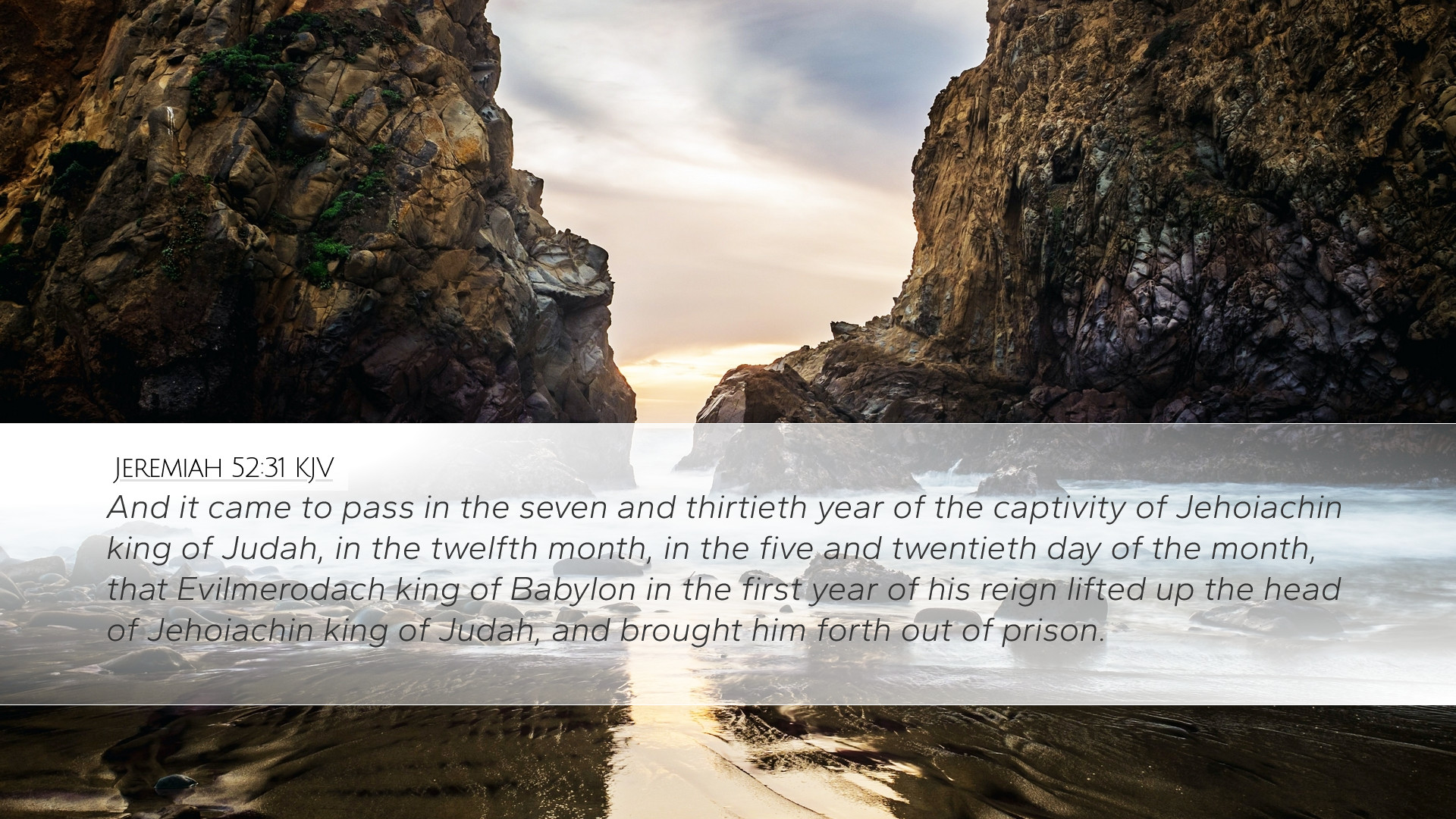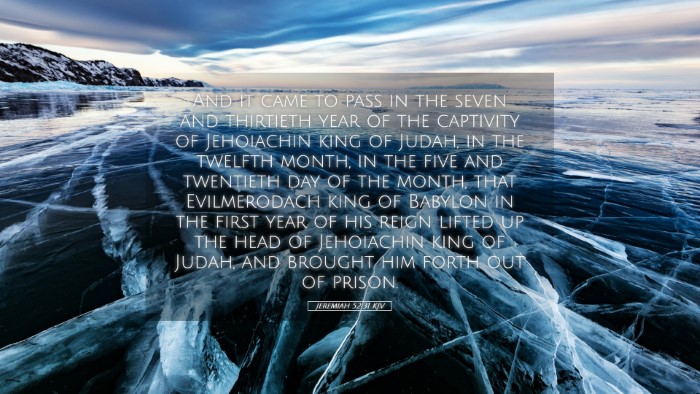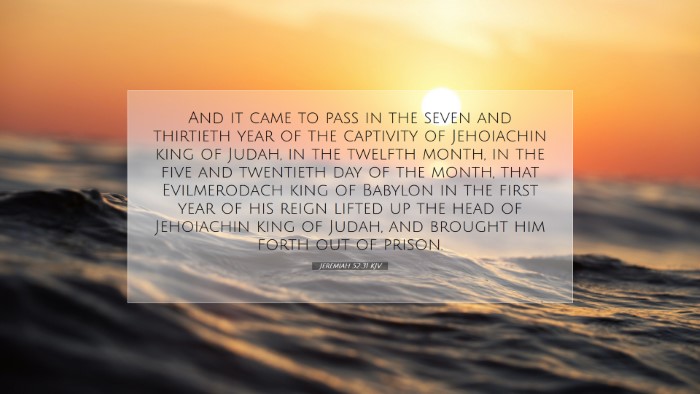Commentary on Jeremiah 52:31
Jeremiah 52:31 states:
"And it came to pass in the thirty-seventh year of the captivity of Jehoiachin king of Judah, in the twelfth month, on the twenty-five of the month, that Ev'il-merodach king of Babylon, in the year that he began to reign, lifted up the head of Jehoiachin king of Judah out of prison."
Introduction
This verse concludes the account of the fall of Jerusalem and the captivity of Judah, serving as a poignant snapshot of hope amidst despair. The release of Jehoiachin marks a significant moment, as it signifies the beginning of God's restoration for His people and the fulfillment of His promise. Here, we explore the implications of this verse through the insights of noteworthy public domain commentaries.
Historical Context
The context of this verse falls within the larger narrative of the Babylonian exile, which resulted from the persistent disobedience of the Hebrew people toward God. Jehoiachin was taken captive by Nebuchadnezzar and imprisoned for thirty-seven years. His eventual release by Ev'il-merodach highlights a pivotal change in leadership and a potential shift in Israel's fate.
Insights from Matthew Henry
Matthew Henry notes that the reign of Ev'il-merodach was marked by a spirit of clemency, contrasting the brutality of Nebuchadnezzar. He underscores that the elevation of Jehoiachin was not merely a personal victory but a symbol of hope for all Judah. Henry elaborates on how this release fulfilled God's promise to restore His people:
- Divine Timing: Henry emphasizes that it was God's providence that orchestrated this event. The timing, noted as the thirty-seventh year of captivity, signifies that God does not forget His covenant.
- Symbol of Restoration: The act of lifting Jehoiachin’s head out of prison is seen as a metaphor for the lifting of despair from the people of Judah. His release reflects the potential for spiritual and national restoration.
Insights from Albert Barnes
Albert Barnes provides a detailed examination of the implications surrounding Jehoiachin's release:
- Political Dynamics: Barnes discusses the significance of a new king ascending to the throne. Ev'il-merodach's decision to release Jehoiachin shows a divergence from the previous reign's policy, indicating a shift that the Jewish nation could potentially leverage for re-establishment.
- Source of Hope: Barnes sees the episode as reflective of a new beginning. The restoration of Jehoiachin could rekindle hope in the exiled community, suggesting that they may yet return to their homeland.
Insight from Adam Clarke
Adam Clarke adds depth to the spiritual and moral significance of this event:
- Chastening of the Lord: Clarke points out that the years of captivity were a period of chastening for Jehoiachin and the people of Judah. His release serves as an illustration of God’s grace, showing that even after prolonged suffering, scripture demonstrates God's willingness to extend mercy.
- Symbol of Future Redemption: Clarke highlights how Jehoiachin's ascendance, even post-captivity, foreshadows the future redemption of Israel. This narrative reinforces the belief that genuine repentance leads to restoration.
Theological Implications
This verse also opens the door to rich theological reflections:
- God's Sovereignty: The release of Jehoiachin illustrates the sovereignty of God over nations and kings. This serves as a reassurance that God oversees history and that His promises prevail despite human circumstances.
- Hope in Despair: Jeremiah 52:31 tells us that even after a period of intense suffering, God's people can find hope. This is a reminder for the present-day church that God's faithfulness endures through trials, encouraging believers to remain steadfast.
- Restoration and Renewal: This verse is pivotal in understanding the narrative of restoration in the Old Testament. It signals the transition from judgment to grace, a theme that resonates throughout scripture, culminating in the New Testament's message of redemption through Christ.
Conclusion
Jeremiah 52:31 serves as a crucial reminder of God's enduring faithfulness and mercy. The combined insights from Matthew Henry, Albert Barnes, and Adam Clarke provide a rich tapestry of understanding, blending historical context with profound spiritual insights. For pastors, students, theologians, and scholars, this verse encapsulates the essence of hope, restoration, and the unwavering promise of God amid human heartbreak. It invites all to reflect on the overarching narrative of God's providence and the significance of each event in the grand story of salvation.


